10 Awesome RCS Messaging Examples to Boost Your Marketing
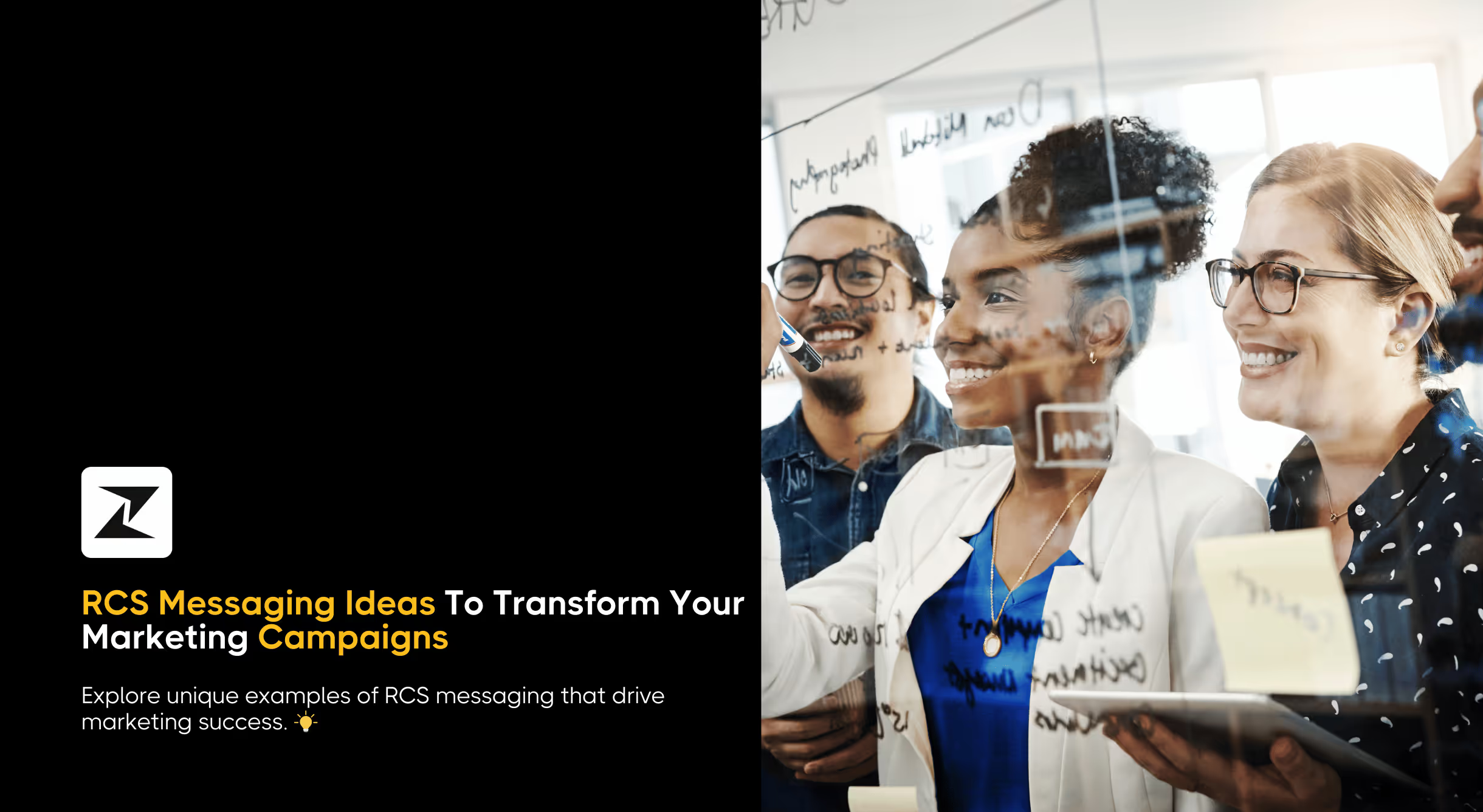
If you are a marketer or someone who has experience running marketing campaigns, you must be aware of SMS marketing, a form of traditional outreach, where you utilize plain text messages to connect with your customers.
However, SMS comes with numerous disadvantages, like a 160-character limit and the inability to send visuals for increased sales engagement. So, it is next to impossible to send appealing content to build an interactive customer experience for better ROI.
For this reason, GSMA and Google have developed RCS. It is a rich form of communication that is an improvement on traditional SMS and supports modern functionalities to optimize your engagement.
On top of that, with its recent inclusion by Apple in the latest iOS18 framework, RCS can be used by businesses to reach both Android and iPhone users, unlocking a new market segment to expand their reach.
Seeing the increased popularity of RCS, in this article, I’ll go over 10 examples of how to use RCS from real-life brands to boost customer engagement and make the most of your communication efforts. So, let’s start by understanding the capabilities that RCS has to offer.
Key functionalities of RCS messaging
Unlike text messages that only allow you to send plain messages with links, RCS includes better communication features for enhanced engagement. With its media-rich and highly interactive messages, you can move prospects along the stages of the sales funnel more efficiently.
Here are some ways in which RCS is better than other marketing channels:
Advanced messaging: The primary aspect that differentiates RCS is its features. It comes with multimedia capability to send HD images, videos, and product carousels. Also, the interactive nature of RCS lets your customer browse products, click buttons, and complete actions within the message itself.
Branded communication: RCS lets you highlight your business’s image with brand colors, logos, and other elements. This way, you can deliver a holistic marketing experience.
Verified profiles: In contrast to SMS, where the sender ID is a combination of letters and numbers, RCS enables you to verify your business profiles and showcase to your customers that you are an actual brand, eliminating the fear of fraudsters and phishers.
In-depth monitoring: With RCS, you can keep track of your engagement and delivery metrics, including receipts, CTR rate, open rate, and conversion rate. Analyzing these KPIs will allow you to run personalized outreach campaigns for driving better results.
RCS messaging examples to inspire you
Now that you are aware of the powerful messaging capabilities of RCS, now is the time to check out the various ways to use RCS for your business. Having said that, below are a few examples and use cases of RCS messaging.
Marketing messages
One of the biggest uses of RCS is for sending marketing messages to promote your offerings. With billions of Android and iPhone users as its customers, you can effectively reach anyone around the world. With its rich card, carousels, and buttons, you can compel customers to perform actions from the app itself, without the need for redirection.
For example, boAT, a music accessory brand uses RCS to promote its new headphones for kids. With an image of the product, a discount code, and a “Shop Now” button in the same message, there is a high chance of getting a conversion then and there.
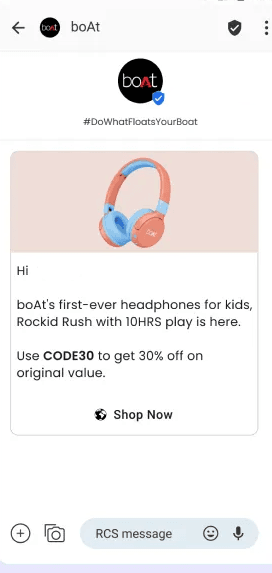
Black Friday and Cyber Monday campaigns
Black Friday and Cyber Monday (BFCM) shopping season is one of the most anticipated ones in the entire year. Businesses all over the world offer huge discounts on their products, and what better way to achieve this than sending interactive RCS messages to your customers?
Using RCS’s features, you can send relevant, visually appealing marketing BFCM messages that consist of HD images of the products and purchase buttons to make your brand different from the rest.
In fact, in the 2023 BFCM season, businesses sent 25,000x more RCS messages compared to the previous year.
Run Back Friday and Cyber Monday campaigns across RCS.
Use Zixflow to set up BFCM campaigns and engage customers during the peak shopping season to get more sales.
Build RCS CampaignsBooking appointments & sending reminders
Being an interactive communication medium, RCS allows you to elevate your scheduling to the next level. Since the channel works with other apps like browsers, you can use it to schedule appointments without needing to fill out lengthy forms or book one via a call.
This can be a great help to service-based businesses where you need the customer to be present to deliver your service. For instance, hospitals can leverage this feature and integrate it with their calendars so patients can choose an available time slot.
By doing so, you can reduce the no-show rates, streamline the process, and ensure you don’t double book for the same time. In addition to that, RCS enables you to send timely reminders and any changes that might have occurred.
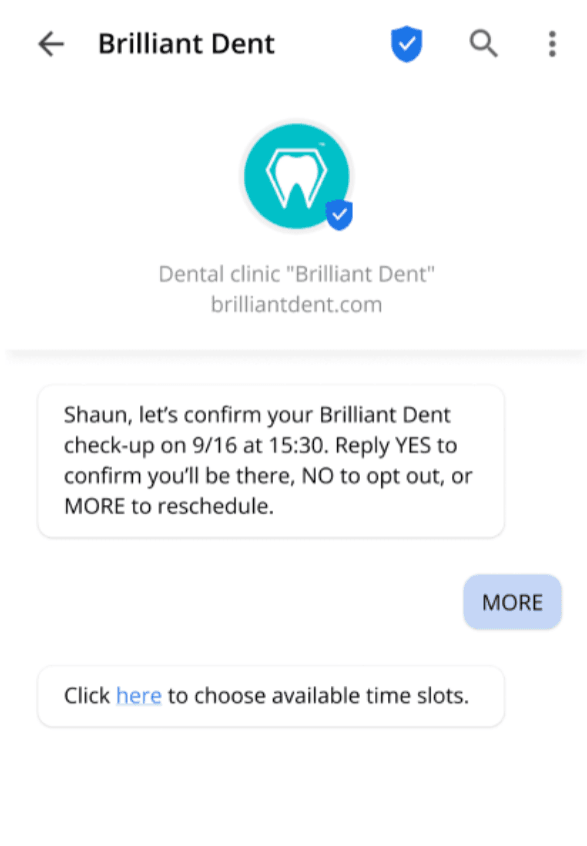
Sharing locations
Online businesses are not the only ones that can benefit from RCS messaging. Brick-and-mortar businesses can utilize RCS to direct foot traffic to the store. As I mentioned before, RCS works with the other apps present on a device, and Google Maps is one of them.
With RCS, you can send location messages including the physical address of your store, images, and videos to help customers find it easily. Restaurants, apparel shops, and service providers like automobile repair garages are prime examples of some of the businesses that can take advantage of this capability.
Product catalogs
RCS lets you send highly personalized promotional messages to drive conversions. On top of the images, you can send interactive product carousels, where you can showcase multiple products in a single message and allow your customers to choose which one they like.
Furthermore, the catalogs include product descriptions, pricing, and a CTA button allowing for a streamlined checkout process. Your recipient can tap on the buy button and finish the checkout within the app itself.
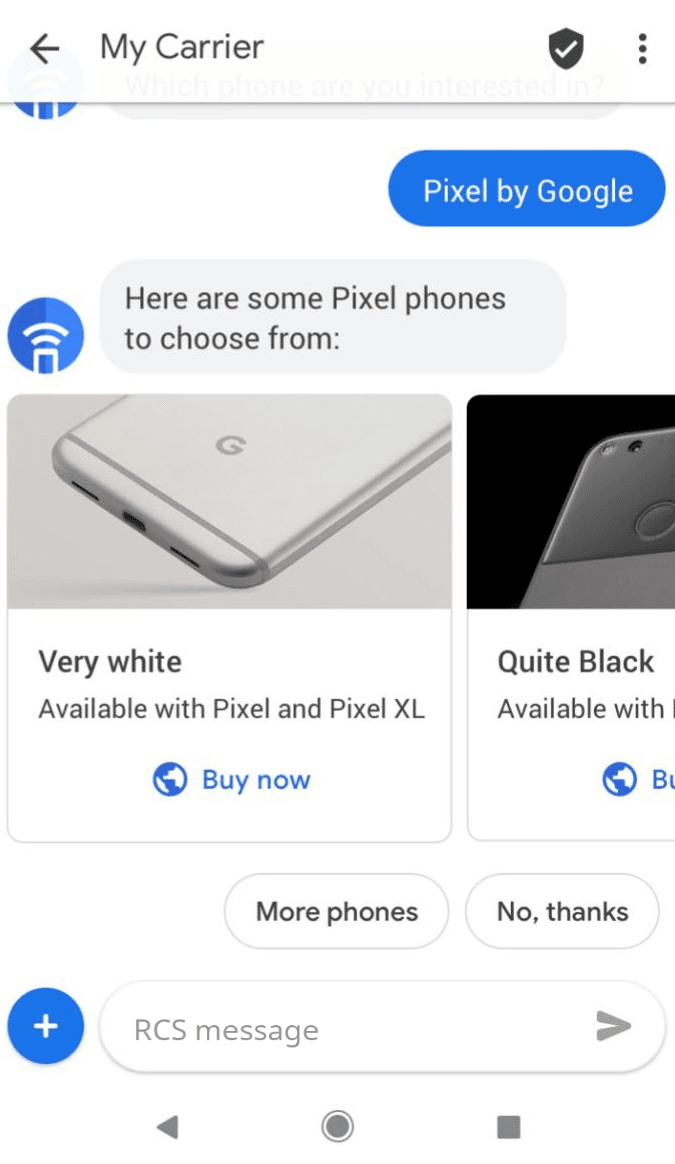
Gather customer feedback
Apart from the examples that I have talked about till now, RCS also allows you to gather user feedback in a conversational manner, in contrast to submitting a form or taking a survey. The feedback collection via RCS appears as a normal conversation that you can even automate with the help of RCS automation.
For example, EasyMyTrip, a hospitality business, uses RCS to gather feedback from customers after the completion of their trips. It also inquires about future possibilities like upcoming trips or plans to mark the contact as a potential lead it can convert down the line. This way, it can not only better its services but keep acquiring new leads to drive its bottom line.
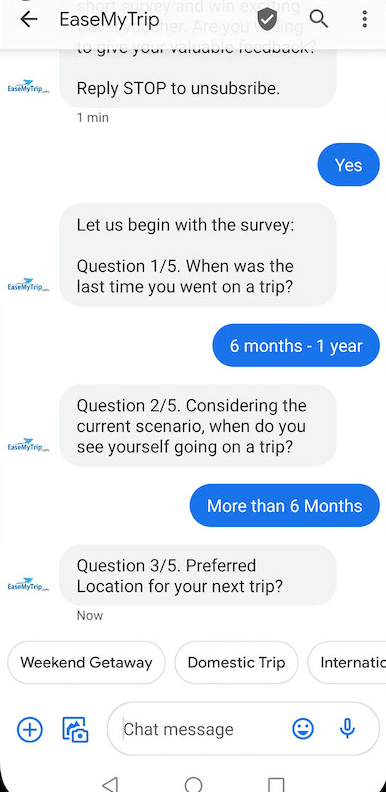
Collect customer feedback effectively with an RCS chatbot
Craft a custom RCS chatbot with Zixflow to automate your conversations and boost engagement without needing manual effort.
Talk to SalesSend order status
RCS messaging is an excellent tool for keeping customers in the loop about their purchase and shipping statuses. It allows you to send informative messages that offer real-time status updates on where the product is and when they can expect it to be delivered.
For example, an e-commerce store can use RCS to notify customers about their product’s status by sending tracking numbers and estimated delivery times. This enables customers to monitor their orders in real time without hassle.
Not only does it provide peace of mind for customers, but it also enhances the overall customer service by minimizing delays and offering instant support, using an intuitive messaging channel.
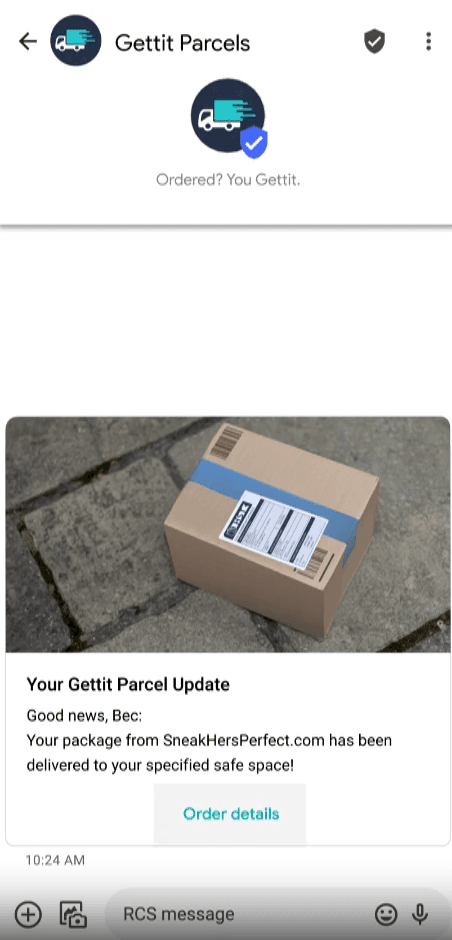
One-time passwords messages
RCS OTPs, sent through a verified profile, foster trust right from the start. This branded approach helps reduce the likelihood of phishing attempts since users can identify genuine messages and avoid suspicious-looking ones.
Additionally, the verified aspect of RCS elevates the customer experience, making users feel secure when inputting the code sent from an authentic source. Banks and financial institutions are a few examples that can make use of RCS’s end-to-end encryption to send OTPs safely.
Educational messages
Sending educational content and helpful resources is another way of using RCS and letting your customers make the most of their purchases. Sharing valuable details with customers is considered a good practice, and RCS enables the delivery of engaging educational content.
However, to maximize their effectiveness, you need to craft personalized messages based on the recipient's communication or purchase history, demographics, or other factors that reflect their individual preferences.
Sending irrelevant help content that has nothing to do with a customer is a shortcut way of getting ignored or being reported as spam.
Leverage these RCS messaging examples to kickstart your outreach
RCS provides a dynamic and engaging communication platform, which is ideal for a variety of use cases such as sending interactive catalogs, secure OTPs, and essential alerts. Its approved sender profiles enhance trust along with boosting customer engagement and using it to drive more sales.
With the introduction of RCS in iOS 18, you can effectively use it to connect with iPhone users from a single channel, eliminating the need to run separate marketing campaigns for iMessage. With the growing adoption of RCS, it is only a matter of time before it revolutionizes how you interact with your customers.
So, why not take this opportunity early and implement RCS into your marketing framework? With RCS service providers like Zixflow, you can start using RCS and automate your communication from today.
Our robust RCS messaging platform is designed for businesses that want to be a step ahead of the competition. So, book a personalized demo to learn about why you need RCS and how it can help you enhance your business communication.
